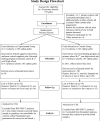The impact of school subsidies on HIV-related outcomes among adolescent female orphans
- PMID: 25530603
- PMCID: PMC4274377
- DOI: 10.1016/j.jadohealth.2014.09.004
The impact of school subsidies on HIV-related outcomes among adolescent female orphans
Abstract
Purpose: We examine effects of school support as a structural HIV prevention intervention for adolescent female orphans in Zimbabwe after 5 years.
Methods: Three hundred twenty-eight orphan adolescent girls were followed in a clustered randomized controlled trial from 2007 to 2010. The experimental group received school fees, uniforms, and school supplies and were assigned a school-based "helper." In 2011-2012, the control group received delayed partial treatment of school fees only. At the final data point in 2012, survey, HIV, and Herpes Simplex Virus Type 2 (HSV-2) biomarker data were collected from approximately 88% of the sample. Bivariate and multivariate analyses were conducted on end point outcomes, controlling for age, religious affiliation, and baseline socioeconomic status.
Results: The two groups did not differ on HIV or HSV-2 biomarkers. The comprehensive 5-year intervention continued to reduce the likelihood of marriage, improve school retention, improve socioeconomic status (food security), and marginally maintain gains in quality of life, even after providing school fees to the control group.
Conclusions: Paying school fees and expenses resulted in significant improvements in life outcomes for orphan adolescent girls. Biological evidence of HIV infection prevention, however, was not observed. Our study adds to the growing body of research on school support as HIV prevention for girls in sub-Saharan Africa, but as yet, no clear picture of effectiveness has emerged.
Keywords: HIV prevention; Orphan; Randomized Control Trial; Sub-Saharan Africa.
Copyright © 2015 Society for Adolescent Health and Medicine. Published by Elsevier Inc. All rights reserved.
References
-
- Joint United Nations Programme on HIV/AIDS (UNAIDS) UNAIDS World AIDS Day Report. UNAIDS; Geneva: 2011. [May 2, 2014]. 2011. Available at http://www.unaids.org/en/media/unaids/contentassets/documents/unaidspubl....
-
- Hervish A, Clifton D, Population Reference Bureau . The Status Report on Adolescents and Young People in Sub-Saharan Africa: Opportunities and Challenges. United Nations Population Fund (UNFPA) and the Population Reference Bureau; Johannesburg and Washington D.C.: 2012. [May 2, 2014]. Available at http://www.prb.org/pdf12/status-report-youth-subsaharan-Africa.pdf.
-
- Khan S, Mishra V. Youth Reproductive and Sexual Health. DHS Comparative Reports No. 19. International Inc.; Calverton, Maryland, USA: Macro: 2008. [April 11, 2014]. Available at https://dhsprogram.com/pubs/pdf/CR19/CR19.pdf.
-
- Luke N. Age and economic asymmetries in the sexual relationships of adolescent girls in sub-Saharan Africa. Stud Fam Plann. 2003;34(2):67–86. - PubMed
-
- Glynn JR, Carael M, Auvert B, et al. Why do young women have a much higher prevalence of HIV than young men? A study in Kisumu, Kenya and Ndola, Zambia. AIDS. 2001;15(Suppl 4):S51–60. - PubMed
Publication types
MeSH terms
Grants and funding
LinkOut - more resources
Full Text Sources
Other Literature Sources
Medical


